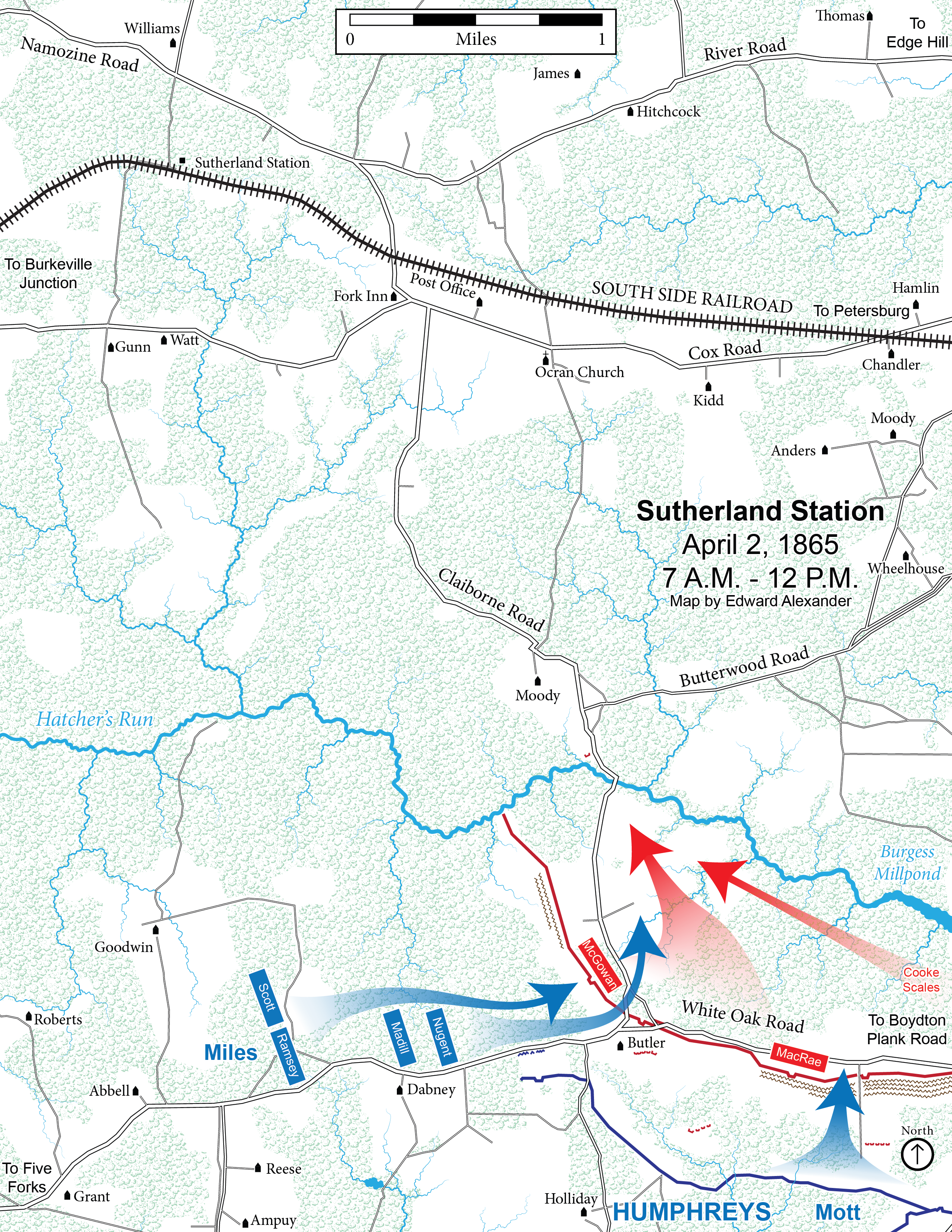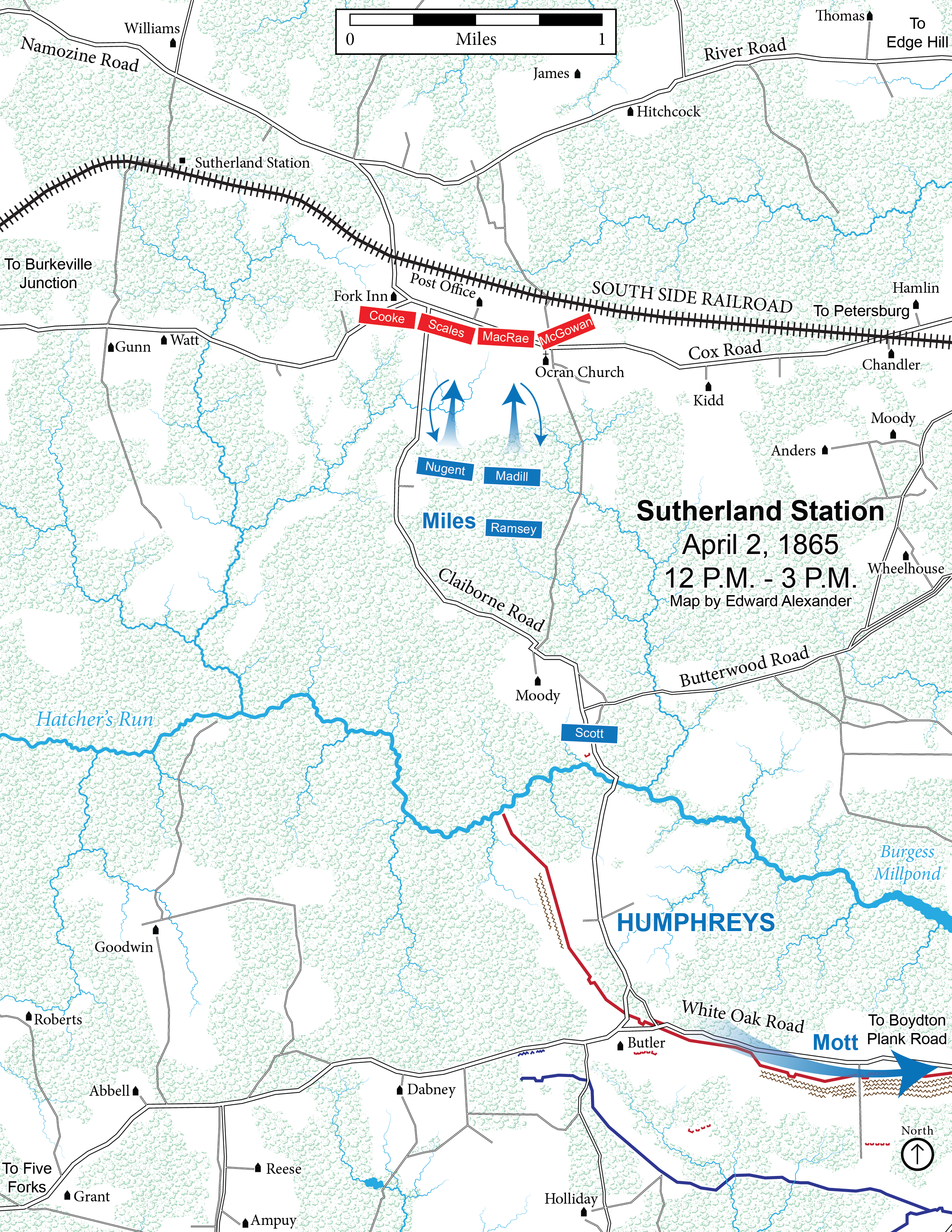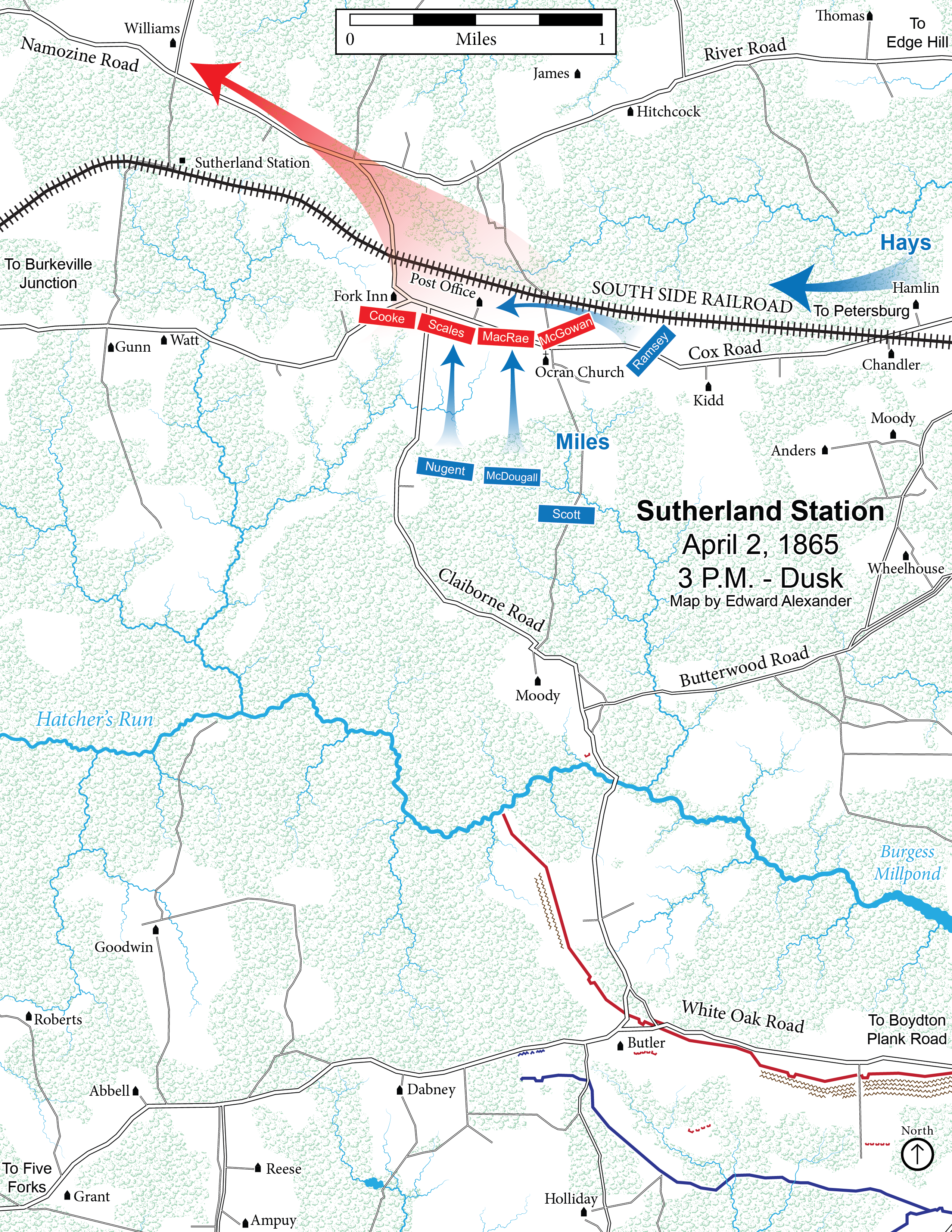Nelson Miles and the Bayonet in 1865

(Library of Congress)
Prevailing opinion today suggests that a war that began in 1861 as one of bayonets and bravado on open battlefields transformed into trenches, firepower, and raids on supply by 1865. Frontal attacks had become a thing of the past and no military thinker would be so foolish as to expect a bayonet charge to succeed. Right?
While flipping through the O.R.‘s for Petersburg in March 1865 (Volume 46, Part 3) I found a remarkable directive from a II Corps division commander who very much expected the cold steel to be the most effective weapon on a battlefield even at the end of the fourth year of war.
This particular officer was no slouch either. By 1865 Nelson Appleton Miles had already established a name for himself. Born in Westminster, Massachusetts in 1839, Miles received no formal military education before the Civil War. In September 1861 he recruited a company from Boston and received commission as first lieutenant. Upon arrival in Virginia Miles served on the staff of Brig. Gen. Oliver Otis Howard.
Wounded at Seven Pines, Miles thereafter became lieutenant colonel of the 61st New York Infantry. Casualties above him in the ranks brought opportunity for more promotion, taking helm of the regiment at Antietam. Miles himself was wounded again at Fredericksburg. On May 2, 1863, at Chancellorsville, he played a key role in repulsing the repeated Confederate attacks meant to mask Jackson’s flank march. Wounded yet again at that battle, Miles would receive the Medal of Honor in 1892 for “distinguished gallantry while holding with his command an advanced position against repeated assaults by a strong force of the enemy.”
His wound forced his absence from Gettysburg but he returned to command a II Corps brigade during the Overland campaign and a division at Petersburg.
On March 25, 1865, Miles’s division connected with the VI Corps near the “fish hook” in the line most prominently marked by Fort Fisher. That morning the IX Corps repulsed a desperate Confederate assault against Fort Stedman. Major General Andrew Atkinson Humphreys, commanding the II Corps, intended to press the Confederate pickets in his own front. Humphreys correctly suspected that Gen. Robert E. Lee stripped the southern lines southwest of Petersburg to provide more muscle for the assault on Stedman.
Miles’s men drove the Confederate pickets near the lower branch of Arthur’s Swamp into their main line and then withstood a frantic assault launched by Maj. Gen. Henry Heth to reclaim the lost rifle pits. Modern historians refer to this combat on the 25th as the battle of Watkins’s Farm. Miles stated in his official report, “The fighting on the part of the troops of this command was marked by an unusual spirit of determination and enthusiasm; they fought in line of battle, without works, in as perfect order as if upon drill; scarcely a skulker or coward was noticed in rear of the line of battle.”
However, he also noted, “Toward the close of this action the Second Brigade, being out of ammunition, after having once replenished their boxes, and having sustained a loss of about one-fourth its numbers, was relieved by three regiments of General [Joseph J.] Bartlett’s brigade, Fifth Corps.”
The Second Brigade composed the tattered remnants of Col. Robert Nugent’s once-proud Irish Brigade. Their withdrawal to resupply struck a nerve with Miles that had manifested itself during the earlier offensives against Petersburg. Though he praised his men in his official report, including Nugent, who “particularly distinguished himself by the gallant manner in which he fought his brigade, resisting and repulsing the several attacks of the enemy in the most stubborn manner,” Miles had a scolding tone for his command regarding future engagements in his General Orders Number 28, released March 27, 1865. His reference to the bayonet is what caught my eye, but I reproduce the entirety:
The attention of all officers is called to the wasteful use of ammunition in time of action. A great deal or random firing is indulged in by the men, which is perfectly useless and must be restrained by the officers. Men are often seen going to the rear while their regiments are engaged, their only excuse being that they are without ammunition. This will be no excuse. Ammunition can always be procured behind the line of battle, but must be sent for by brigade or regimental commanders. The troops should rely more upon the bayonet, which is the most powerful weapon.
On the last campaign [referring to 1864 offensives] several regiments broke up and scattered in the most disgraceful manner. All commanders will maintain the organizations of their command under all circumstances, whether it be a regiment, company, or platoon. If a regiment receive orders to advance or fall back, it will do so in good order, and every officer must know where all his men are and hold them well in hand, so as to be able to move them in a body in any direction.
In the coming campaign any organization which breaks and disperses in the manner above referred to will be recommended to be disbanded. When attacked by the enemy, the skirmish-line, instead of falling back at once upon the main line, will resist to the utmost and contest every foot of ground. If fairly compelled to retire, the skirmishers will be assembled upon the flanks of the regiments in their rear and participate in the engagement there. Brigade commanders will never allow skirmishers to pass to the rear of the line of battle. They will rally on it, and fight with it, and when they enemy are repulsed will be again advanced.
Miles and his division saw combat twice more during the final week at Petersburg. The II Corps crossed Hatcher’s Run on March 29th to protect the V Corps flank while they, in turn, protected Union cavalry from interference along the Boydton Plank Road. During the battle of White Oak Road on March 31, 1865, Humphreys sent Miles forward to assist the V Corps as they withered under a fierce Confederate counterattack. The division plunged into a Virginia brigade also being advanced as support at that time and forced them back into their fortifications along White Oak Road.
Miles attacked this line on the morning of April 2nd, but the VI Corps breakthrough to the northeast and sweeping of the southern lines down to Hatcher’s Run had already forced the Confederates to evacuate along Claiborne Road until they assumed a defensive posture near Sutherland Station on the South Side Railroad. Miles eagerly pursued the four retreating Confederate brigades but miscommunication between Humphreys and cavalryman Phil Sheridan allowed the southerners time to retreat and position themselves on a dominating plateau just south of the railroad.

Determined to act as aggressively as he had instructed his troops in his general orders, Miles did not take time to reconnoiter but launched an attack that the Confederates easily repulsed. Captain William P. Oldham, commanding a company in the 44th North Carolina Infantry, MacRae’s Brigade, recalled:
It was almost high-noon on that clear Sunday morning when the Yankees came in sight, formed in line of battle at fixed bayonets, they proceeded to charge our line. It was a most magnificent sight, on a most perfect day. Their guns looked like silver in the dazzling brilliancy of the noon-day sun. On they came in perfect order, at a double quick pace. But Oh! My! how we covered that ground with dead Yankees. They melted like snow before the summer’s sun. (William P. Oldham, “Horrors of Prison Life Described by an Aged Veteran,” Wilmington Dispatch, March 18, 1917.)

Undeterred, the Union division realigned themselves and unsuccessfully charged a second time. Miles finally took time to place one of his brigades in a flanking position past the Confederate left. The Federals overwhelmed the frail Rebel resistance at this point and rolled the line back. A stubborn stand allowed the brigades that remained intact to withdraw on the Namozine Road, but their route now began to long retreat to Appomattox.
After the war II Corps veterans lauded the battle of Sutherland Station as the engagement that cut the last supply line into Petersburg. Earlier during the morning scattered elements of the VI Corps, ranging from small parties to entire regiments, had already cut the South Side Railroad, limiting the strategic value of Miles’s battle. Other veterans criticized the general for not scouting the Confederate line or maneuvering his men into better position until after two attacks had been bloodily beaten back.
Nevertheless, Miles had finally realized the culmination of what Ulysses S. Grant had intended ever since he spurred the Army of the Potomac into motion in early May 1864. He found the Confederates in the open and immediately attacked before they could better entrench or slip away. How many “what ifs” can we name from the Wilderness onward–opportunities for the Union army to land a blow that were frittered away by excessive caution.
The bayonet advocate’s tactics matched his own demands on his soldiers but ultimately produced one in a series of northern victories the decisive day at Petersburg.

Fascinating reading !
Another excellent post in this series.